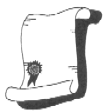 TRIZ
Textbooks: CID Course for Children, 1-1G0 TRIZ
Textbooks: CID Course for Children, 1-1G0 |
  
|
Introduction
(at the Class):
(Learning about the Subject) |
Fairy Tales
School:
Course of Creative Imagination
Development (CID),
1st Grade, 1st Semester,
Methodical Guide-Book |
Natalia
V. Rubina, 1999 [published
in Russian]
English
translation by Irina Dolina,
May 23, 2000
Technical
Editing by Toru Nakagawa, July
12, 2000 |
Posted
in this "TRIZ Home Page in Japan" in English on Jan.30, 2001 under the
permission of the Author.
(C) N.V. Rubina,
I. Dolina, and T. Nakagawa 2001 |
 |
INTRODUCTION.
LEARNING
ABOUT THE SUBJECT |
Hello!
The first lesson
in a new class always means excitement, expectations, hopes to achieve
good results, to perform good work. Not only a teacher is excited,
the kids also are looking forward to a new lesson, to learning a new subject.
It is necessary that from the first lesson kids could realize that CID
class is a wonder world, a fairy tale. In this respect, music, pictures,
magic tricks, unusual problems, fairy tale's characters which during the
current year the kids will invent might be helpful. So...
Let's introduce yourselves! What would
you like to tell about yourselves?
For the first
grade students it would be difficult to say the most important things about
themselves and introduce themselves briefly. That is why it would
be better if a teacher starts. The first grade students often do not know
each other well, therefore it is possible to play a following game: a student
introducing himself, name three students, who have spoken before him.*1
*1 (Translation
Note:) Important: In the Methodological Guide-Books, the
paragraphs written in oblique letters are the explanations to teachers
for their preparatory study, while the paragraphs written in straight
letters are the speeches and actions for the teacher to perform in the
class.
Guess, what is it?
They fly without wings,
They run without legs,
They sail without sails
You are right, those are
clouds. Usually we don't pay attention to the clouds in the sky,
only if it rains we are waiting when the clouds go away and the sun appears
again. And what would you say if a white cloud addresses you with
the following words:
- Hello, my name is Colabo!
As you understand, clouds
can talk only in fairy tales. No wonder that Colabo*1
is a fairy cloud.
A fairy cloud
is the first character that the children are going to meet. From
now on the appearance of Colabo will introduce activities on developing
speech skills - composing riddles, proverbs, tales, etc. We shall
return rather often to the picture, that the kids will draw at the first
lesson. That's why it is necessary to discuss in detail how to depict
in a picture all the main properties of this amazing character.
*1 (Translation
Note): In Russian, the word cloud is 'oblako' (spelled in English
alpahbets). So the Author named the fairy cloud 'Colabo'.
It may be: 
small as a white fluffy kitten or big
as a boundless snow plain,
black as a smoke and white as the snow flakes,
soft as a down mattress or hard as an ice hill,
noisy as a mighty ocean or quiet as a forest brook,
warm as the sun beams and cold as the drops from
a fountain.
All these contradictory
properties are hard to include in a single picture, and it is not necessary.
As a rule every student offers his own ideas by combining any pair of these
opposite properties. A kid's picture may reveal his own idea.
If kids want to reveal all the properties of a new character they can draw
several pictures.
Colabo travels much
and visits different countries. In one of the countries it heard
a story of Losharic. The cloud wanted very much to see this remarkable
creature but it had to water a flower bed, therefore it was late for the
meeting.
Now draw Losharic  so
that Colabo could find out what this creature looks like.
so
that Colabo could find out what this creature looks like.
This simple
task might be a good testing of kids' imagination. To activate the
associative images in connection with the word "Losharic", you may ask
kids to find some hotchpotch words that sounds similar to the pronunciation
of Losharic*2. It's
essential that kids get an image of a fantastic creature.
*2 (Translation
note:) In Russian, the word horse is 'loshad' (as spelled in English
alphabets) and the word for small ball is 'sharik'. Thus the name
'Losharic' sounds like 'loshad - sharik', meaning as a fairy horse made
of small balls.
Which picture in your
opinion was easier to draw: of Colabo or Losharic? What is the difference
between them?
|
Imagination is a human ability to imagine things that do not exist.
It is possible to imagine what you have already seen somewhere, to reconstruct
a familiar image. It is more difficult to devise something that nobody
has ever seen. |
At CID classes
we will be all, to some extent, dreamers and story-tellers, because CID
is a Developing of Creative Imagination. We'll learn to devise fairy
tales, make up proverbs and riddles, find out a lot of interesting information
about the simplest things and learn how to make mysterious the most common
things, learn to solve complicated and interesting problems.
Imagine the following
situation. 
Once Emil got into a scary
cave of a Giant. The Giant was delighted to have such an easy prey
because Emil was just a little boy. But the Giant decided to play
with the boy in the following way. If Emil can turn the Giant out
of the cave, the boy will be set free; but if not, the Giant will cook
and eat him. How to help Emil? 1
Footnote 1:
One of the possible ways of solving the problem: Emil suggests the
Giant playing a different game: He, the Giant, is not allowed to enter
his
cave. The rules of such a game is unlikely to appeal to the Giant.
So he will run out of his cave... and, will lose the game.
Emil knows a lot of riddles
like this, but what is more important, he can teach how to solve them,
using certain rules.
This is the first meeting with a very
important character. At one of the next lessons the kids will be
able to draw a picture of this cute boy. In the future he will help
them to master the methods of solving creative problems.
And now magic!
Look! I have three simple
match boxes in my hands,  but
it is not so simple... Two of the boxes I hold in my right hand and shake
them.
but
it is not so simple... Two of the boxes I hold in my right hand and shake
them.
The boxes are empty and don't clatter. The
third match box I hold in my left hand. By the sound of clattering
we realize that it contains matches. Now I shift one of the
boxes from my right hand into my left hand. Will the matches clatter
in this box or not?
- Certainly, not,
because it is empty.
- Let's check.
I shake the match gently... Look! The matches clatter!
The secret of this magic
trick is very simple. Do you want to solve it? In this case
try to ask me about this riddle, but take into consideration that I will
reply to your questions only "yes" or "no".
- Are the boxes alive?
- No.
- Have you replaced them?
- No.
- How many boxes have you got?
- Only "yes" or "no".
- Your hands are magic!
- Yes. And what does it mean?
(In the left sleeve I have a box of matches)
In order
to understand the game "Yes"-"No", you may use any suitable situation.
You may, for example, think of any object, a word and suggest that
the kids should guess what it is, asking questions, answered by the teachers
with "yes" or "no". It is important that the kids should
step by step, asking few questions, find the correct answer.
The game "yes"-"no" has many methodological possibilities; with its help
it is possible to develop many components of the creative process: logic,
dialectics, skills of analysis, of synthesis, of comparison, of defining
and solving contradictions and utilization of the resources, memory and
attention. It is an excellent preparation for understanding the main
topic of the course "methods of solving creative problems".
- The game that
we played with you is called "Yes-No game". Emil likes it very much
and often plays it. Because he knows the rules, which help to solve
such problems. Did you like it? Let's play some more?

In the "Card Index to the CID classes
for the 1st grade" you will find a list of "Yes-No problems".
- Well, let's sum up the results.
- Tell me, please, what is CID?
- Why do you think a human being should
develop his imagination?
- To be more cheerful.
- To compose fairy tales.
- What kind of people need the imagination
more than others ?
- An artist.
- A composer.
- A poet.
- A photographer.
- Everybody...
- It means that we'll all enjoy dreaming
together, learning and devising something new and wonderful.
You are going to meet
with the magicians and their amazing friends, as the fairy tales are always
full of wonders.
We wish you success and
happy solutions!
Last updated
on Jan. 30, 2001. Access point: Editor: nakagawa@utc.osaka-gu.ac.jp


 so
that Colabo could find out what this creature looks like.
so
that Colabo could find out what this creature looks like.
